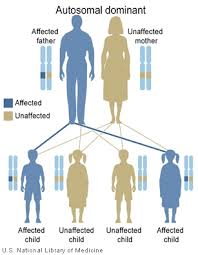Williams Syndrome
It is a rare congenital disorder associated with deletion of genetic material in chromosome 7.
Features[edit | edit source]
It is characterized by mental deficiency and some growth deficiency and elfin faces but an overly social personality and a remarkable gift for vocabulary.
Signs and symptoms[edit | edit source]
The signs and symptoms of Williams syndrome can vary, but generally include:
- mild to moderate intellectual disability;
- a distinctive facial appearance;
- and a unique personality that combines over-friendliness and high levels of empathy with anxiety.
People with Williams syndrome typically have difficulty with tasks such as drawing and assembling puzzles. They tend to do well on tasks that involve spoken language, music, and learning by repetition.
Facial features[edit | edit source]
Facial features common in young children with Williams syndrome include a broad forehead; a short nose with a broad tip; full cheeks; and a wide mouth with full lips. In older children and adults, the face appears longer and more gaunt. Dental problems are common and may include small, widely spaced teeth and teeth that are crooked or missing.
People with Williams syndrome often have outgoing, engaging personalities and tend to take an extreme interest in other people. Attention deficit disorder (ADD), problems with anxiety, and phobias are common.
The most significant medical problem associated with Williams syndrome is a form of heart disease called supravalvular aortic stenosis (SVAS). SVAS is a narrowing of the large blood vessel that carries blood from the heart to the rest of the body (the aorta). If this condition is not treated, it can lead to shortness of breath, chest pain, and heart failure. The presence of other heart and blood vessel problems has also been reported.
Additional signs and symptoms of Williams syndrome may include: abnormalities of connective tissue (tissue that supports the body's joints and organs) such as joint problems and soft, loose skin;
- increased calcium levels in the blood (hypercalcemia) in infancy;
- developmental delays;
- problems with coordination;
- short stature;
- vision and eye problems;
- digestive problems; and
- urinary problems.
Cause[edit | edit source]
Williams syndrome is caused by a missing piece (deletion) of genetic material from a specific region of chromosome 7. The deleted region includes more than 25 genes.
CLIP2, ELN, GTF2I, GTF2IRD1, and LIMK1 are among the genes that are typically deleted in people with Williams syndrome. Researchers have found that the loss of the ELN gene is associated with the connective tissue abnormalities and heart disease in many people with this condition. Studies suggest that deletions of CLIP2, GTF2I, GTF2IRD1, LIMK1, and perhaps other genes, may help explain many of the unique behavioral characteristics and cognitive difficulties. Loss of the GTF2IRD1 gene may also contribute to the distinctive facial features often present. The relationship between some of the other deleted genes and the features of Williams syndrome is not yet known.
Inheritance[edit | edit source]
Most cases of Williams syndrome are not inherited. The condition typically occurs due to random events during the formation egg or sperm cells in a parent. Therefore, it most often occurs in people with no family history of Williams syndrome.
In a small portion of cases, people with Williams syndrome inherit the chromosome deletion from a parent with the condition. In these cases, it is inherited in an autosomal dominant manner. This is because having only one changed copy of chromosome 7 in each cell is enough to cause signs and symptoms.
Regardless of whether Williams syndrome occurs randomly or is inherited from a parent, each child of a person with Williams syndrome has a 50% chance of inheriting the condition.
Diagnosis[edit | edit source]
The diagnosis of Williams syndrome (WS) is established by genetic testing identifying a specific microdeletion at chromosome 7q11.23 (on the long arm of chromosome 7).
Because the symptoms and severity of WS vary, no single feature is needed to establish the diagnosis. WS may first be suspected in individuals with:
- Cardiovascular (heart) disease (elastin arteriopathy) - any artery may be narrowed. Supravalvar aortic stenosis (SVAS) is the most common heart abnormality, occurring in 75% of people with WS. Peripheral pulmonic stenosis is common in infancy.
- Distinctive facial features - broad forehead, a short nose with a broad tip, full cheeks, and a wide mouth with full lips. In older children and adults, the face appears longer and more gaunt.
- Connective tissue abnormalities causing a hoarse voice, inguinal or umbilical hernia, bowel or bladder diverticulum, rectal prolapse, joint limitation or laxity, and soft, lax skin.
- Intellectual disability - some degree is present in most people with WS. Some have average intelligence.
- Strengths in verbal short-term memory and language, and extreme weakness in visuospatial construction.
- Unique personality - overfriendliness, empathy, generalized anxiety, specific phobias, and attention deficit disorder are commonly present.
- Growth abnormalities - prenatal growth deficiency, failure to thrive in infancy, poor weight gain and growth in the first four years, and a brief pubertal growth spurt.
- Endocrine abnormalities such as hypercalcemia, high calcium urine levels (hypercalciuria), hypothyroidism, and early puberty.
Treatment[edit | edit source]
- Treatment for people with Williams syndrome may be individualized depending on the symptoms and severity in each person. Management may include:
- Feeding therapy for infants with feeding problems
- Early intervention programs and special education programs for children with varying degrees of developmental disabilities
- Behavioral counseling and/or medications for attention deficit disorder and/or anxiety
- Surgery for certain heart abnormalities
- Medications or diet modifications for hypercalcemia
- Orthodontic appliances or other treatments for malocclusion of teeth
- Gonadotropin-releasing hormone agonist for early puberty
| Williams Syndrome Resources | ||
|---|---|---|
|
| |
Translate to: East Asian
中文,
日本,
한국어,
South Asian
हिन्दी,
Urdu,
বাংলা,
తెలుగు,
தமிழ்,
ಕನ್ನಡ,
Southeast Asian
Indonesian,
Vietnamese,
Thai,
မြန်မာဘာသာ,
European
español,
Deutsch,
français,
русский,
português do Brasil,
Italian,
polski
Navigation: Wellness - Encyclopedia - Health topics - Disease Index - Drugs - World Directory - Gray's Anatomy - Keto diet - Recipes
Search WikiMD
Ad.Tired of being Overweight? Try W8MD's physician weight loss program.
Semaglutide (Ozempic / Wegovy and Tirzepatide (Mounjaro) available.
Advertise on WikiMD
WikiMD is not a substitute for professional medical advice. See full disclaimer.
Credits:Most images are courtesy of Wikimedia commons, and templates Wikipedia, licensed under CC BY SA or similar.Contributors: Prab R. Tumpati, MD




